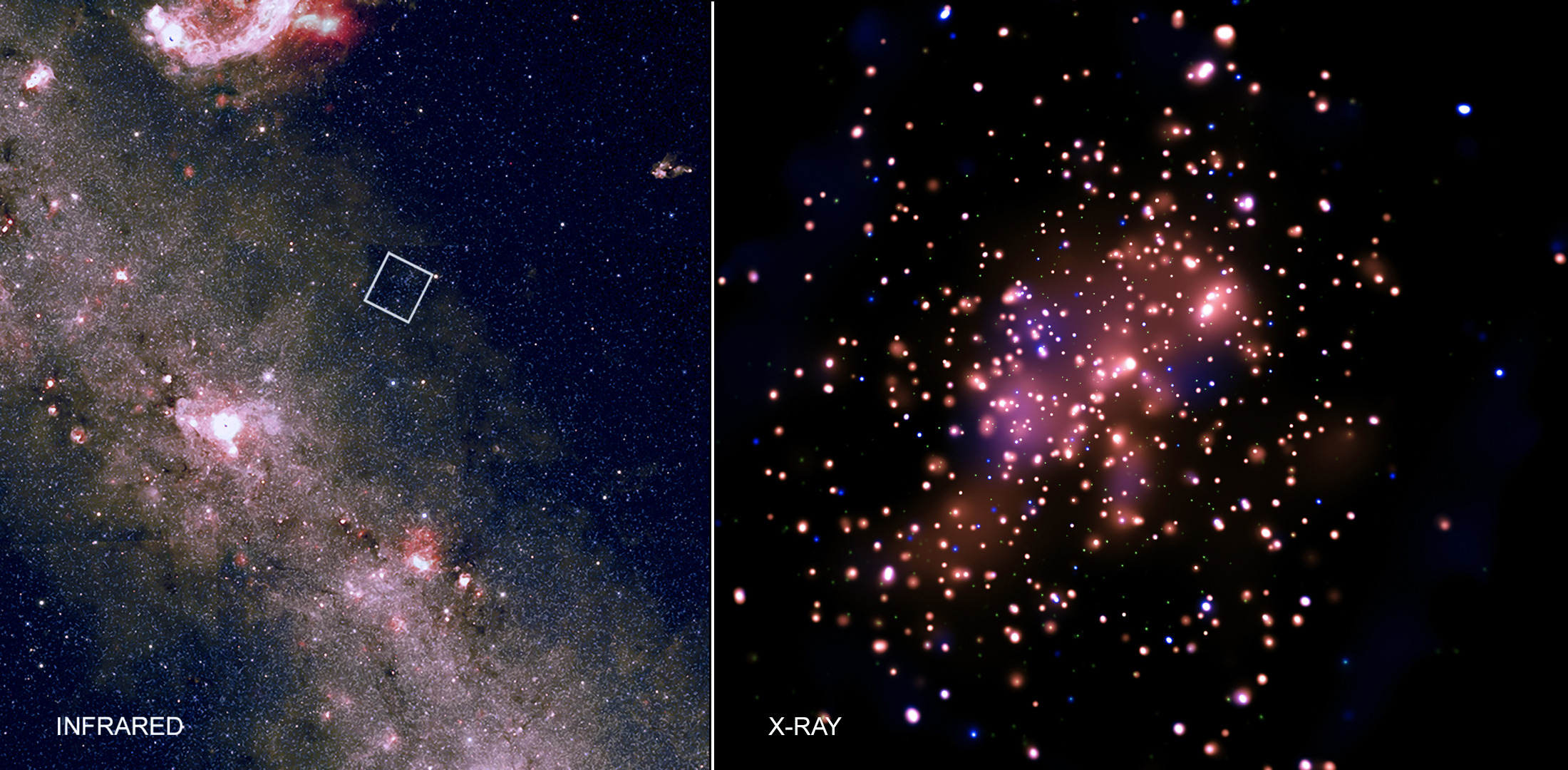
Infrared image is ~5 degrees across (about 452 light years); Right: Xray image is ~16 arcmin across (about 24 light years). Credit: X-ray: NASA/CXC/Univ. of Valparaiso/M. Kuhn et al; IR: NASA/JPL/WISE
In some ways, star clusters are like giant families with thousands of stellar siblings. These stars come from the same origins—a common cloud of gas and dust—and are bound to one another by gravity. Astronomers think that our Sun was born in a star cluster about 4.6 billion years ago that quickly dispersed. By studying young star clusters, astronomers hope to learn more about how stars—including our Sun—are born...
Read More








Recent Comments